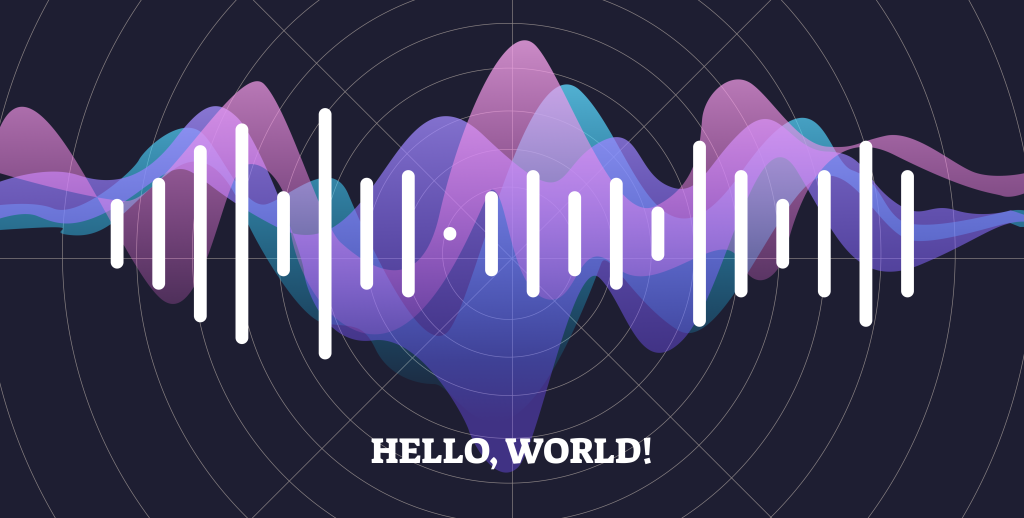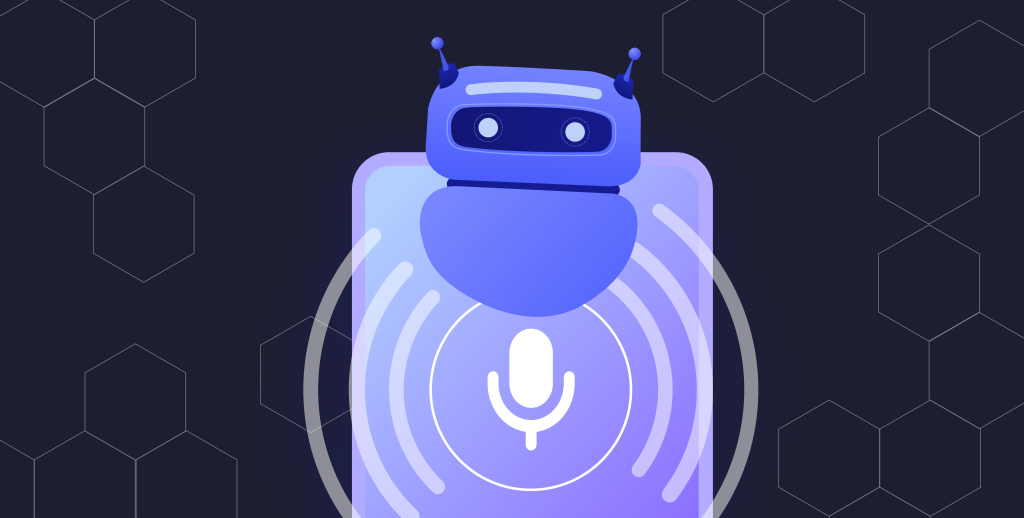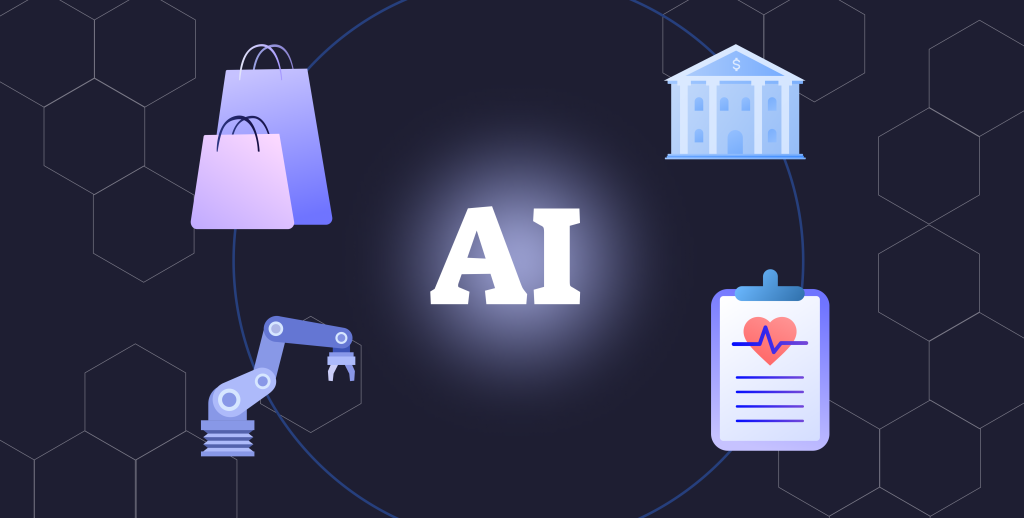Artificial intelligence has become an integral part of information technologies. They are used in technologies that have an impact on every aspect of our life: from complex ones like intelligent surgical machines to more simple ones like in-phone assistants.
AI enables machines to learn from experience and make decisions that are more accurate, efficient, and reliable than those made by humans. AI-powered technologies can be applied to a wide range of tasks such as natural language processing, computer vision, and robotics. Let’s see examples of the most effective ways AI can be implemented to improve our lives:
Speech recognition
This one is undoubtedly useful in everyday life as well as in business. The name speaks for itself – speech recognition is a technology that recognizes speech and converts it into text for further use. By implementing speech recognition, people are able to quickly and accurately convert audio recordings into text, reducing the time and effort needed to do so manually. It also enables people to use their voices to interact with computers and other devices, making it easier for them to quickly access and process information. The technology does this by analyzing the sound waves associated with spoken words and then matching them against a database of known words. It can also use context clues to determine the meaning of words, which allows it to accurately convert spoken language into text. Speech recognition is a powerful tool that can be applied to automate tasks, reduce errors, and improve efficiency.

Natural speech generation
It is not always easy for humans to communicate effectively and efficiently. In addition, data processing by systems involves a lot of complexity and is very different from information processing by the brain. Text-to-data technology converts text into data and assists users in expressing their ideas and thoughts seamlessly. Text-to-data technology provides a bridge between humans and machines, allowing for more efficient communication and more accurate data processing. It enables users to quickly and easily convert their thoughts into data that can be more easily understood by systems and machines. This can lead to more accurate and efficient data processing, as well as faster and more efficient communication between humans and machines.
Natural language processing
The goal of natural language processing is to understand how human languages interact with computers. Using text analytics, machine learning analyzes sentence structure, interpretation, and intention. It is widely applied in fraud detection systems, and security systems. Natural language processing attempts to replicate human language using algorithms and automated processes. It can be used to understand commands, parse out keywords, and detect sentiment. By doing so, it can help detect fraudulent behavior because it can identify patterns that humans may overlook.
Virtual assistant
These programs based on Artificial Intelligence are programmed to help people with small tasks like keeping up with schedule or quickly search information. It is also widely used in customer service through chatbots as well as a smart home manager. AI programs are able to learn and adapt over time to become more efficient. This means that they are able to accurately answer questions, provide solutions or manage tasks with minimal human input. This makes them useful for automating tasks and providing quick responses to customer inquiries.

Machine learning platforms
An important part of artificial intelligence is machine learning, which enables machines to interpret data sets without having to be programmed. Machine learning platforms are a set of algorithms that allow machines to identify patterns and gain insights from large amounts of data. This can then be used to make predictions or make decisions based on the data. This type of artificial intelligence is becoming increasingly important as more and more data is created and needs to be analyzed.
One of the branches of machine learning – reinforcement learning – saw a breakthrough at the end of 2022. The name of this development is ChatGPT – a chatbot that is based on a conversational dataset that can understand and respond to user input. The model is also trained to recognize and respond to the user’s sentiment and to identify the context of the conversation so that it can provide more accurate responses.
AI optimized hardware
As more and more artificial intelligence-based software is developed, the need for hardware that will run such programs arises as well. Artificial intelligence models cannot be supported by conventional chips. That is why new generations of artificial intelligence chips are being developed to support neural networks, deep learning, and computer vision. AI hardware includes CPUs designed for scalable workloads, neuromorphic chips, and special silicon for neural networks. AI hardware is designed to make the most of available resources and enables more efficient execution of computationally intensive tasks. It also provides the necessary computing power for large datasets and complex algorithms, which is essential for modern AI applications. Moreover, AI hardware enables faster training and inference speeds, which is essential for real-time applications such as autonomous driving, facial recognition, and natural language processing.

The fields of use
Above, we’ve mentioned that AI technologies are used to provide customer service and to help solve everyday needs, but that is certainly not the only use for such technologies.
Retail
AI can quickly process large amounts of data to understand consumer preferences and make recommendations based on that data. It can also be used to optimize stock management, ensuring that products are available when customers need them. This is done by making sure that the right products are displayed in the right locations.
Health care
Artificial intelligence is able to quickly and accurately analyze patient data, such as X-ray readings, and develop personalized healthcare plans. It can also be used to remind patients to follow their health care plans and provide feedback on their progress.
Banking
AI algorithms are able to detect patterns and anomalies that are too subtle or complex for human eyes to detect. They are also able to analyze an immense amount of data to identify these patterns and anomalies much faster than a human can. This allows financial institutions to take action quickly, preventing fraudulent or suspicious transactions from slipping through the cracks.
Manufacturing
AI algorithms can detect patterns within the data, such as when a machine needs maintenance based on its usage and performance. This data can then be used to accurately predict future demand, allowing factories to optimize production and prevent costly downtime. For instance, according to Forbes, unplanned downtime costs industrial manufacturers an estimated $50 billion dollars a year.
Final thoughts
Development of AI technologies is swift and steady, so it’s only wise to jump on the trend while it’s still relatively new.
If you are interested in developing an app that includes AI, let us know via sales@vrgsoft.net. We will make sure to give you the necessary tools to develop the app you need, or to create a digital solution tailored to your needs. We will provide you with the necessary guidance, support, and expertise to make sure that the app or solution is of the highest quality.